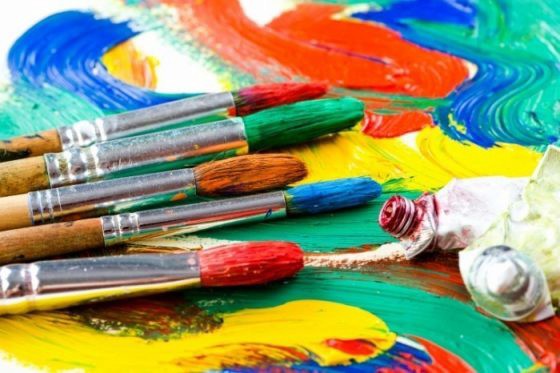The Beauty Of Maths Patterns: Exploring Mathematical Sequences
The Beauty of Maths Patterns: Exploring Sequences | Mathnasium

The world’s greatest sculptors, painters, and photographers depend on math to create their art. Not only do artists use elements of composition — such as geometry and proportions — to perfect their work, they also use math behind the scenes in the studio! This week’s word problems show a practical application of math in sketching, sculpting, photography and painting — exactly the kind of thing that every budding artist should learn and understand.
Look at the following word problems and choose the one that’s the right skill level for your child. Have them give it a try. And when they feel they’ve found the answer, check their solution against ours on the next page.
Lower Elementary
Question: Oscar sketched twice as many portraits as Polly. Polly sketched twice as many portraits as Kate. Kate sketched 4 portraits. How many portraits did Oscar sketch?
Upper Elementary
Question: Carlo had four 16–pound containers of clay. After he sculpted a 36–pound statue of Sir Ian McKellen, how many containers worth of clay did he have left?
Middle School
Question: Tyler shot 7 rolls of film. On each of the first 3 rolls, 16 photos turned out. Fourteen photos turned out on each of the next 4 rolls. If Tyler shoots 1 more roll of film, how many photos need to turn out for Tyler to have an average of 17 successful photos per roll?
Algebra and Up
Question: Mia has two cans of purple paint and a can of white paint. One of the cans of purple paint is 30% red and 70% blue. The other is 50% red and 50% blue. If Mia wants 8 fluid ounces of a mixture that is 20% red, 30% blue, and 50% white, how many fluid ounces of each kind of paint does she need?
Excellent job on today’s word problem! Are you ready to check your answer? Look below to see if your solution matches ours.
Lower Elementary
Answer: 16 portraits
Solution: If Polly sketched twice as many as Kate, then she sketched 4 + 4 = 8 portraits. Oscar sketched twice as many as that, so he sketched 8 + 8 = 16 portraits.
Upper Elementary
Answer: 1¾ container
Solution: We can find out how many containers Carlo used by dividing the amount of clay he used by the amount of clay per container. That’s 36 ÷ 16 = 2R4. Next, we can find out what fractional part of a container got used by dividing the remainder by 16 again. That’s 4 ÷ 16 = ¼. So, Carlo used 2¼ containers of clay. Now we can find that Carlo has 4 – 2¼ = 1¾ containers left.
Middle School
Answer: 32 photos
Solution: Tyler already has 3 × 16 + 4 × 14 = 104 good pictures. To average 17 good pictures per roll, he needs 17 × 8 = 136 pictures to turn out in total. So, Tyler needs 136 – 104 = 32 photos on the 8th roll to turn out.
Algebra and Up
Answer: 2 fluid ounces of 30% / 70%, 2 fluid ounces of 50% / 50%, and 4 fluid ounces of white
Solution: Right away, we know that we need 4 ounces of white paint because 50% of 8 ounces is 4 ounces. So, next we need to find out what amounts of the two purple paints to mix together to make 4 ounces of a 40% red, 60% blue paint (we need to double the percentages because we’re only dealing with the half that isn’t white). We can see that the average of 30% red and 50% red is 40% red, so we need equal parts of the first and second paints. That’s 2 ounces of each to make 8 ounces total. Alternatively, we could use the equation 50% (4 – x) + 30%x = 4(40%) wherein x represents the amount of the first paint.


Mathnasium meets your child where they are and helps them with the customised program they need, for any level of mathematics.
